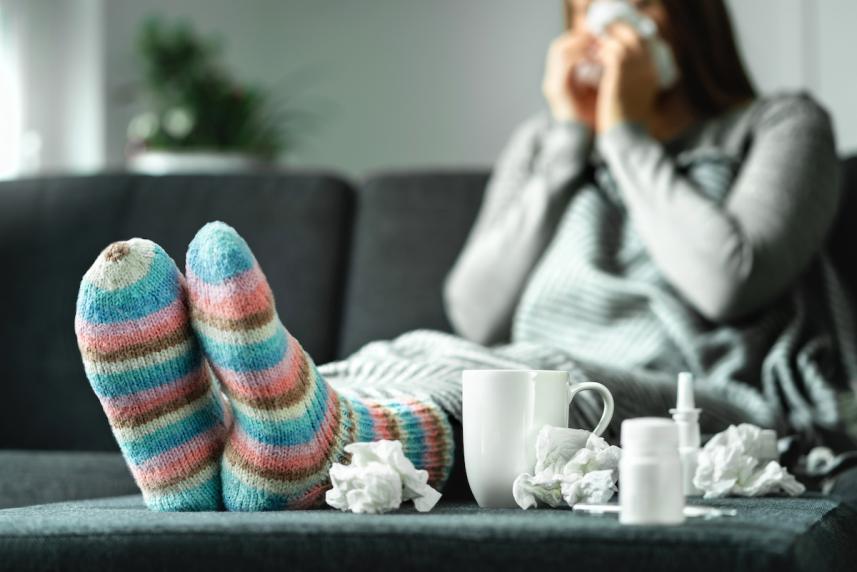A sick guide to fitness
Learn how to adjust your workout when you've been under the weather.

No matter how dedicated you are to your fitness goals, colds and flus can sap you of energy faster than you can change from sneakers to slippers. But what’s best for your body once it’s on the winning side of the virus battle: Feet up? Or a little blood flow?
It depends. “Where your symptoms are can make or break your workout and recovery,” says Karin Richards, MS, director of Health Sciences at University of the Sciences in Philadelphia. Here’s how to make the call:
You’re feeling…low on energy. If you feel like you’re coming down with something, but don’t have a full-blown cold or flu (yet), a workout could be just what you need. Too little exercise or being buried under work may be what’s making you feel under the weather—and unenthused about exercise.
The cure could be as simple as a walk. Research shows regular low-intensity exercise like a leisurely 20-minute walk three times per week can increase energy levels by 20% and reduce fatigue by as much as 65%. And what’s more, it may help you stay ahead of viruses. “One of the best preventative measures (next to washing your hands) is regular physical activity,” Richards says. Instead of skipping exercise altogether, make yourself take a 20-minute stroll around your neighborhood. It just may get your blood flowing and boost your energy levels enough that you feel up for a jog or the gym.
You’re feeling…the wrath of the common cold. “Don’t use the sniffles as an excuse not to exercise,” Richards says. If your symptoms are above the neck (sneezing and stuffy nose), you are probably in the clear for working out. “Lightly to moderately—no marathons,” she says. “I find some exercise, such as walking or running, can help with my congestion.” She says other people like to ease stuffy sinuses and others say can help.
Her best advice: Lower the intensity of your regular workout. If you usually run, walk. If you usually walk briskly, try a slower pace. If you like tough yoga classes, try something gentler. “Just don’t go to the gym and sneeze and cough all over the equipment,” she says. “Remember common courtesy.” She suggests working out at home or outside until you are nearly symptom-free (and wiping down gym equipment before and after use all the time).
You’re feeling…like your flu is on its last legs. The flu is no joke. That’s why getting vaccinated is key. But if you still happen to catch it, know your body needs its strength to recover—not to do curl reps. The rule of thumb Richards uses (same as above) is if your symptoms are fever and below the neck (muscle aches, dizziness, nausea, chest congestion), stay in bed. “You’re better off letting your body fight the germs with rest,” she says. “Your body is stressed fighting the infection and placing additional stress on your body suppresses your immune system even more.” But once the lower-body symptoms are truly gone, she says some low-intensity movement may help you feel better.
As with a cold or when you’re coming back to exercise after time off, you should start slowly. Modify your regular workout until you’re back to 100%. “Avoid intense exercise,” she says. “You are already weak from fighting infection, so your form may be lax. That could lead to injury and feeling worse.” And know when to stop. “Listen to your body most of all,” she says. Dizziness, coughing, nausea, blurry vision, muscle aches, and chills are all signs that you’ve pushed it too far, she says. Give it more time to recover.


